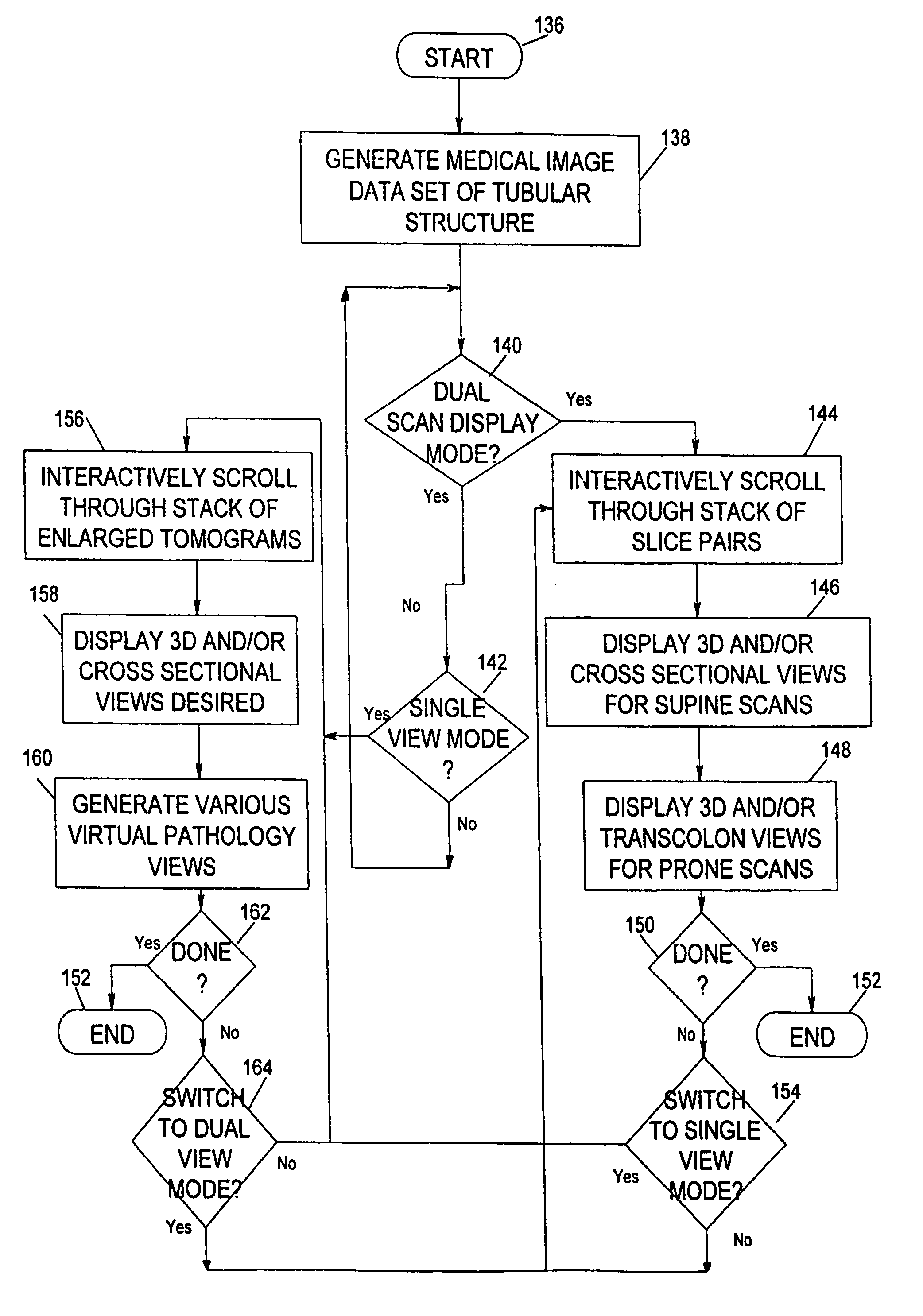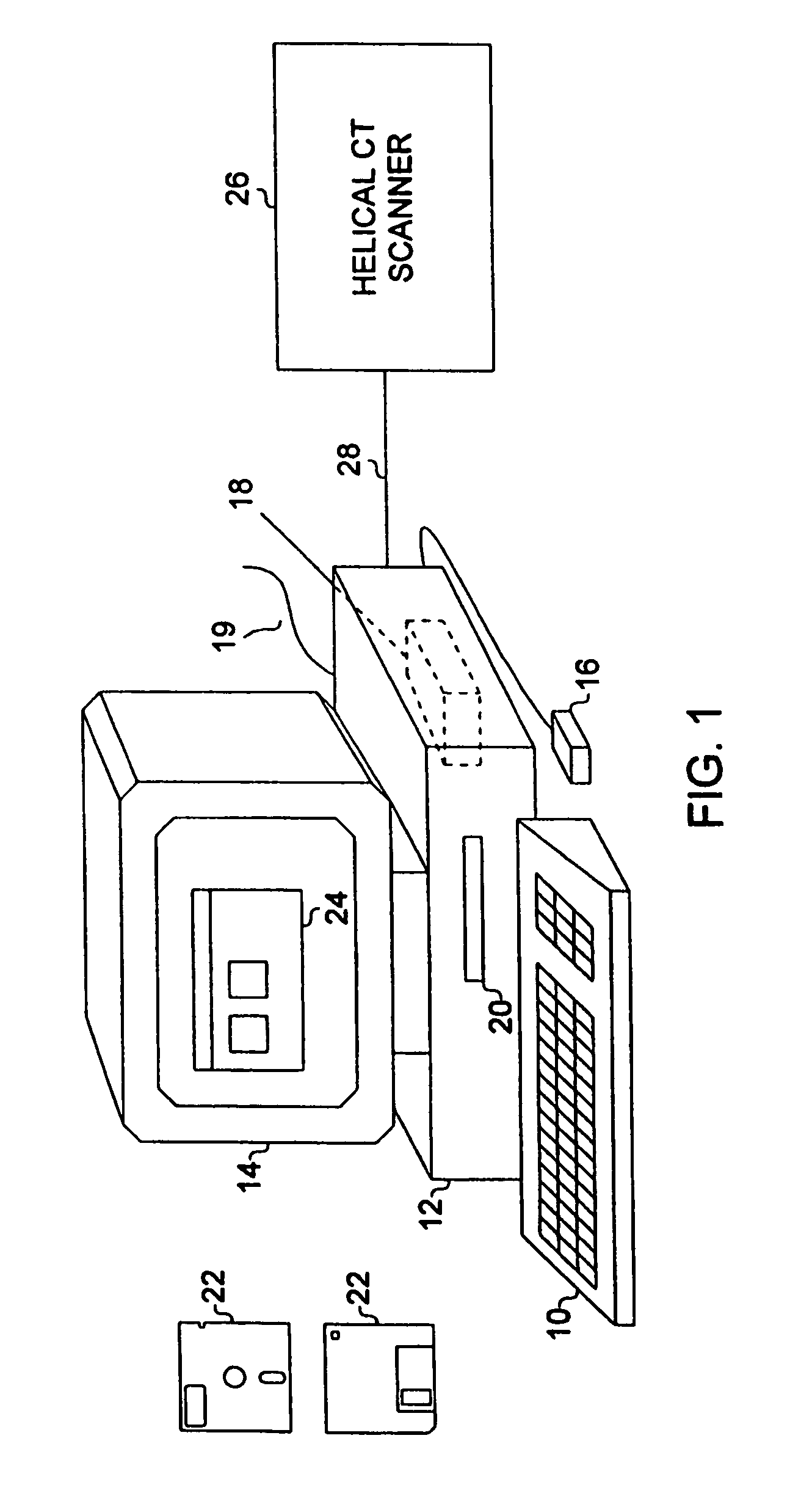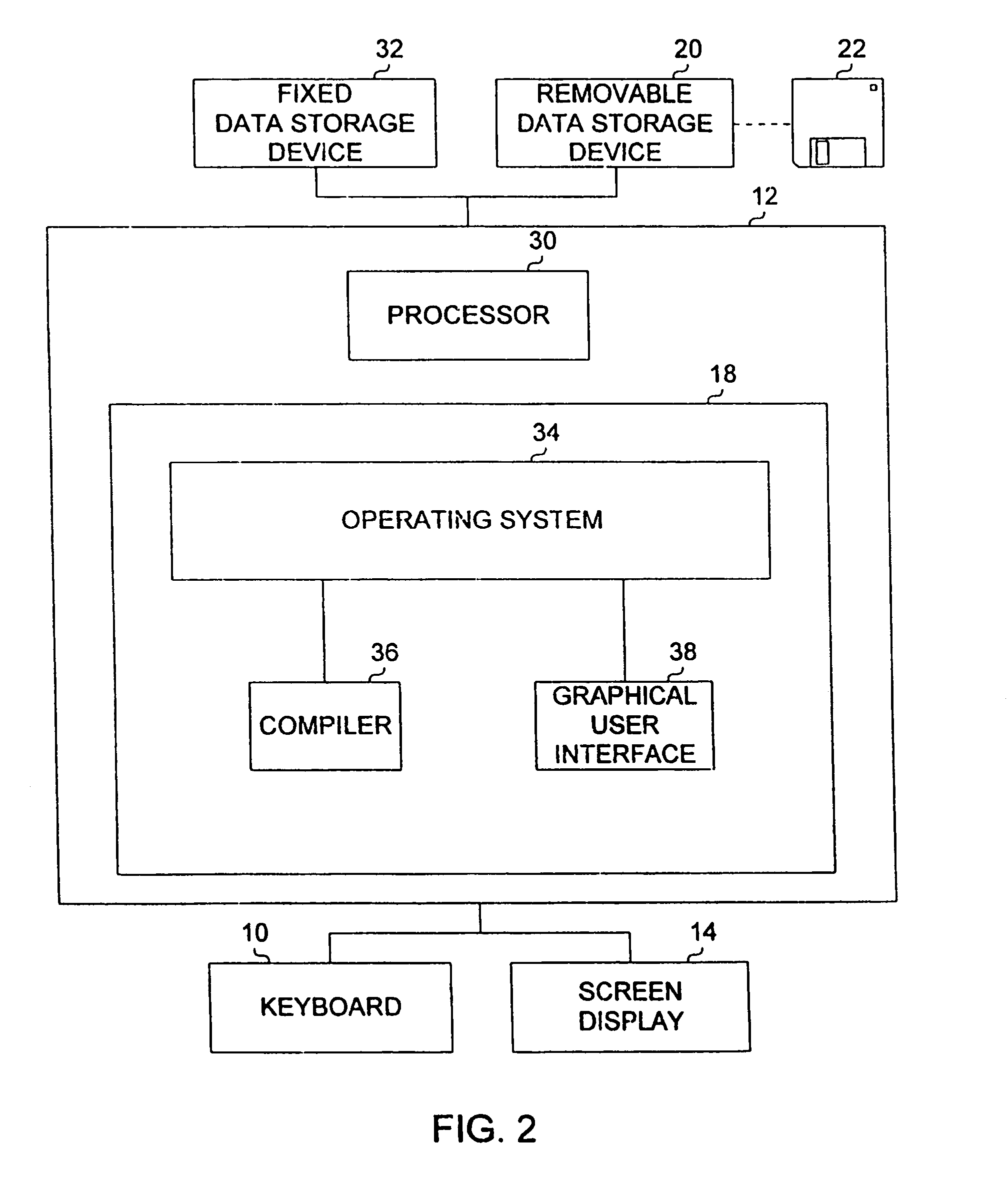System for two-dimensional and three-dimensional imaging of tubular structures in the human body
a tubular structure and two-dimensional imaging technology, applied in the field of two-dimensional and three-dimensional imaging of tubular structures in the human body, can solve the problems of poor patient acceptance, poor compliance, hampered colorectal screening and preventive efforts, etc., to enhance the ability of computed tomographic colography (ctc), shorten the interpretation time, and reduce the interpretation time of scanned image data
- Summary
- Abstract
- Description
- Claims
- Application Information
AI Technical Summary
Benefits of technology
Problems solved by technology
Method used
Image
Examples
Embodiment Construction
[0047]In the following detailed description of the preferred embodiments, reference is made to the accompanying drawings which form a part hereof, and in which is shown by way of illustration specific embodiments in which the invention may be practiced. It is to be understood that other embodiments may be utilized and structural changes may be made without departing from the scope of the present invention.
Glossary
[0048]The following terms and phrases are used throughout the application.[0049]1. Computed tomographic colonography (CTC). A technique combining helical or volumetric CT imaging of the colon with imaging software to produce reformatted 2D and 3D images of the colon.[0050]2. Reformatted 2D images. Images which are oriented at cross section and two orthogonal angles to the colon midline.[0051]3. 3D intraluminal image. An image which simulates an endoscopic view of the colon. The outside of the colon is not visualized.[0052]4. 2D axial image. The original image produced by th...
PUM
 Login to View More
Login to View More Abstract
Description
Claims
Application Information
 Login to View More
Login to View More - R&D
- Intellectual Property
- Life Sciences
- Materials
- Tech Scout
- Unparalleled Data Quality
- Higher Quality Content
- 60% Fewer Hallucinations
Browse by: Latest US Patents, China's latest patents, Technical Efficacy Thesaurus, Application Domain, Technology Topic, Popular Technical Reports.
© 2025 PatSnap. All rights reserved.Legal|Privacy policy|Modern Slavery Act Transparency Statement|Sitemap|About US| Contact US: help@patsnap.com



